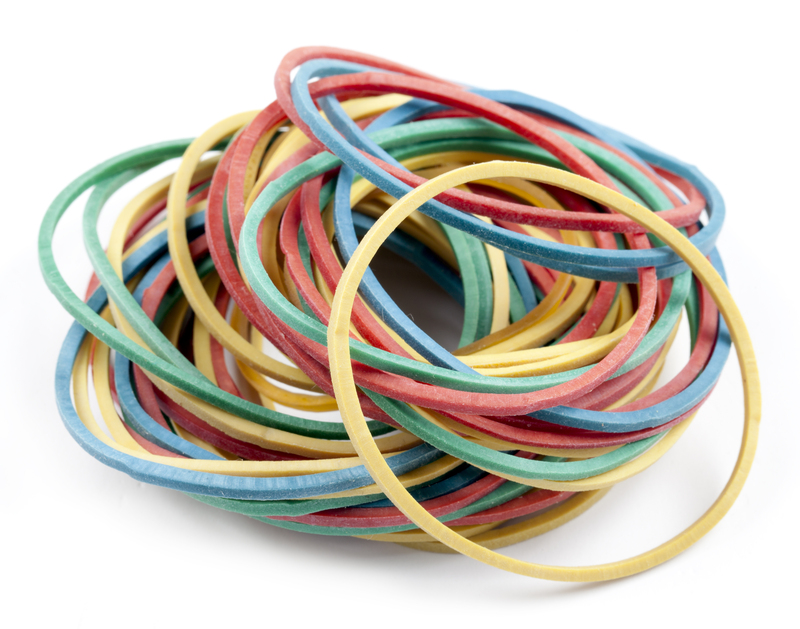Responsible Ways to Discard Non-Useful Cookware: A Comprehensive Guide
Are your old pots and pans gathering dust in your cabinets, no longer safe for cooking or simply taking up valuable space? The question of how to dispose of unusable cookware responsibly is more important than ever, especially as environmental concerns grow. This comprehensive guide explores eco-friendly, effective, and creative ways to discard non-useful cookware, ensuring you make a positive impact while decluttering your kitchen.

Why Responsible Cookware Disposal Matters
Old cookware, from battered non-stick pans to warped aluminum pots and rusty bakeware, poses unique disposal challenges. Sending these items straight to a landfill isn't just wasteful -- it can also be harmful. The materials in cookware, such as metals, plastics, and chemical coatings, are slow to decompose and may leach toxins. On the other hand, proper recycling or repurposing of unusable cookware keeps valuable resources in circulation and reduces the strain on our environment.
The Hidden Environmental Impact of Old Cookware
- Metals and coatings can release pollutants when landfilled or incinerated.
- Non-stick surfaces may contain chemicals (such as PTFE or PFOA) that persist in the environment.
- Quantity of waste: According to EPA statistics, Americans throw out millions of pounds of metal cookware annually.
Assess the Condition: Can It Be Reused?
Before you discard your non-useful cookware, take a moment to determine if it's truly at the end of its life. Often, what seems useless for you might be a treasure for someone else or could find new life in another form.
Signs Your Cookware Is No Longer Safe to Use:
- Cracked or chipped surfaces, especially ceramic or enameled cookware
- Severely warped or misshapen pans that don't sit flat
- Heavily scratched non-stick coatings (these can release harmful chemicals)
- Loose or missing handles and lids
- Rust that can't be removed or pitting
Eco-Friendly Ways to Dispose of Unusable Cookware
1. Recycle When Possible
Recycling cookware responsibly is one of the best solutions if your items can't be safely reused. While not all municipal recycling programs accept cookware, the majority of metal cooking utensils and pans (stainless steel, cast iron, aluminum, copper) are recyclable at dedicated scrap metal facilities.
- Separate materials: Remove any handles made from plastic, silicone, or wood, as these may not be recyclable with the metal.
- Check local scrap metal yards: Most accept old pots and pans, but call ahead to verify their requirements. Some may pay you by weight!
- Ask about non-stick coatings: Some recyclers take items with Teflon or ceramic coatings, while others require them to be removed.
*Tip: Don't place cookware in your curbside recycling unless your city expressly allows it.*
2. Donate If Still Usable
If your cookware is still functional but simply unwanted, consider passing it on. Donation is a responsible way to discard non-useful cookware you no longer need, giving it a second life with someone in need.
- Local charities and thrift stores (Goodwill, Salvation Army, etc.) often accept gently used cookware.
- Domestic violence shelters and food pantries may welcome donations of functional kitchenware.
- Always wash and inspect items before donating to ensure they're in suitable condition.
3. Upcycle and Repurpose Creatively
Sometimes the best way to discard old pots and pans is by transforming them into something useful or beautiful for your home or garden. Upcycling not only keeps waste out of landfills but also lets your creativity flourish.
Creative Upcycling Ideas for Cookware:
- Garden planters: Large pots make quirky and sturdy containers for flowers or herbs.
- Wall art or decor: Paint or decorate frying pans to create kitchen-themed wall hangings.
- Pet bowls: Old stainless steel pans are perfect for feeding animals.
- Organization: Use deep pots as storage bins in your garage or workshop.
Remember:
- Sand down sharp edges before repurposing.
- Avoid reusing non-stick pans for food consumption if the coating is damaged.
Special Considerations for Different Cookware Types
1. Non-Stick Cookware
Disposing of old non-stick pans safely requires extra care. Most non-stick coatings (like Teflon) cannot be recycled in standard scrap metal facilities due to their chemical properties.
- Check the manufacturer's website; some offer take-back or recycling programs.
- Contact specialized e-waste or hazardous household waste centers.
- If you must landfill, wrap the pan to prevent flaking and place it in trash -- as a last resort.
2. Cast Iron
Cast iron is highly recyclable! Many scrap metal yards love cast iron because it can be melted down and reformed endlessly. If possible, restore and sell, donate, or repurpose -- these pans have decades of utility left even when rusty or scarred.
3. Copper and Stainless Steel
Copper and stainless steel cookware is valuable as scrap. Be sure to remove all non-metal parts before selling or recycling, and avoid mixing these metals (keep copper separate from steel).
4. Aluminum Cookware
Aluminum is lightweight and easy to recycle. Check for any attached plastic or resin handles and remove them first.
Alternatives: Dispose of Cookware Through Manufacturer Programs
Several cookware manufacturers are embracing circular economy principles by offering recycling and take-back programs. Brands like Calphalon, TerraCycle, and some local retailers encourage consumers to mail in old kitchenware, which they responsibly recycle or dispose of.
- Calphalon's recycling program: Accepts old (any brand) non-electronic cookware via mail.
- TerraCycle: Partners with major brands for hard-to-recycle household items, including cookware with non-stick coatings.
- Retailers (e.g., Sur La Table): Some kitchenware stores accept old cookware in exchange for discounts.
Contact the manufacturer or check their website for current recycling initiatives or buy-back options.
Hosting or Joining a Cookware Swap
Sometimes, one person's "junk" is another's "kitchen upgrade." Community swap events are great for redistributing unwanted cookware and minimizing waste. Organize a neighborhood cookware swap or search for ongoing events in your area on social media or community bulletin boards.
- Ensure all items are clean and safe for use before swapping.
- Great for students, new homeowners, or those in need of affordable kitchen gear.
Last Resorts: Proper Landfill Disposal
If all your recycling, donation, and repurposing options have been exhausted, and you must discard your non-useful cookware items through regular waste collection, take a few precautions to protect sanitation workers and the environment:
- Wrap sharp or broken edges in newspaper or cardboard.
- Label heavy items as "metal" or "kitchenware" to prevent handling injuries.
- Avoid sending coated or chemically treated cookware to landfill whenever possible.
Cookware You Should Never Throw in the Trash
- Pressurized or electric cookware (like instant pots or pressure cookers) contain electronics and must be disposed of via proper e-waste facilities.
- Ceramic pans or glass cookware often cannot be recycled curbside; check with specialized recyclers.
- Cookware with integrated batteries or heating elements (electric skillets, etc.) presents additional hazards.
Where to Find Local Cookware Disposal Options
Not sure where to begin? Use resources to identify local recycling and donation centers:
- Earth911 offers a search tool by zipcode for all types of recyclables, including metals and non-stick cookware.
- Contact your municipal waste management or public works department.
- Check with large hardware or kitchenware retailers about take-back days.

Eco-Conscious Purchase Habits: Prevent Future Waste
One of the most responsible ways to discard cookware is to minimize waste at its source. Choosing durable, long-lasting cookware made from fully recyclable materials such as stainless steel, cast iron, or copper reduces the frequency of disposal and supports a healthier environment.
- Buy quality over quantity: Invest in timeless cookware pieces with replaceable parts.
- Avoid disposable or very cheap sets that will inevitably need regular replacement.
- Opt for brands with robust warranty or replacement programs.
Conclusion: Make Every Pan Matter
Being a responsible steward of our planet means thinking twice before tossing anything away -- including cookware. By recycling, donating, repurposing, or utilizing manufacturer take-back programs, you can ensure your old pots and pans serve a new purpose or return safely into the production cycle. Next time you upgrade your kitchen, take the opportunity to dispose of your non-useful cookware in a way you (and the Earth) can be proud of!
Remember: Small changes in our daily habits -- including how we handle old cookware -- can make a significant, positive impact on the environment for generations to come.